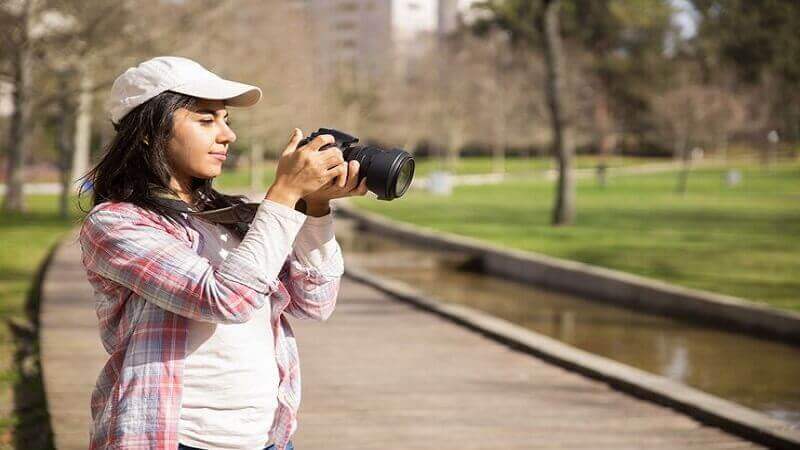Photography is an intricate art form that relies on the manipulation of various elements to capture compelling images. Among these elements, depth of field (DoF) plays a pivotal role in determining the sharpness of the subject and the background. Understanding Photeeq depth of field is essential for creating images with a more professional and artistic quality. In this article, we will explore the concept of depth of field, how Photeeq depth of field aids in its mastery, and practical applications for photographers at every level.
What is Depth of Field?
Depth of field refers to the distance between the nearest and farthest objects in a photo that appear acceptably sharp. In simpler terms, it is the portion of a scene that appears sharp in an image. Depth of field can be deep or shallow, depending on how much of the scene is in focus. A deep depth of field means that most of the scene, from the foreground to the background, is in focus. Conversely, a shallow depth of field means that only a small part of the scene is in focus, with the background and foreground appearing blurred.
Factors Affecting Depth of Field
Several factors influence depth of field, and understanding these can help photographers control the outcome of their images:
- Aperture: The aperture, or f-stop, is one of the primary factors influencing depth of field. A wide aperture (small f-number, like f/2.8) results in a shallow depth of field, while a narrow aperture (large f-number, like f/16) produces a deeper depth of field.
- Focal Length: The lens’s focal length also impacts depth of field. Telephoto lenses (long focal lengths) tend to create a shallow depth of field, while wide-angle lenses (short focal lengths) result in a deeper depth of field.
- Distance from Subject: The closer the camera is to the subject, the shallower the depth of field will be. As you move further away, the depth of field increases, bringing more of the scene into focus.
- Sensor Size: The size of the camera sensor can affect depth of field as well. Cameras with larger sensors (like full-frame cameras) typically have a shallower depth of field compared to those with smaller sensors (like crop-sensor cameras).
How Photeeq Enhances Depth of Field Control
Photeeq depth of field, whether as a software or technique, provides photographers with enhanced tools and insights for mastering depth of field. It simplifies the complex calculations and adjustments required to achieve the desired focus effect, making it easier for both beginners and experienced photographers to capture stunning images. Here’s how Photeeq depth of field helps:
Real-Time Adjustments
One of the key features of Photeeq depth of field is its ability to provide real-time feedback as you adjust your camera settings. This allows photographers to see the impact of aperture, focal length, and distance changes on depth of field before capturing the shot. This instant feedback loop is invaluable in ensuring the final image meets the photographer’s creative vision.
Simulation and Previews
Photeeq depth of field offers simulation tools that allow photographers to preview different depth of field effects before taking a photo. By inputting different settings, photographers can visualize how changing one element, like aperture, will affect the overall sharpness of the image. This simulation capability is especially useful in planning complex shots where precise focus is critical.
Guided Tutorials and Tips
For those new to the concept of depth of field, Photeeq depth of field provides guided tutorials that walk users through the basics of focus and sharpness. These tutorials cover everything from the fundamental principles to advanced techniques, ensuring that users can gradually build their skills. The tips provided are tailored to help users achieve professional-quality images, regardless of their prior experience.
Advanced Customization
Photeeq depth of field also caters to advanced photographers who require more control over their images. It offers advanced customization options for tweaking depth of field effects, allowing users to fine-tune every aspect of their image. This level of control is particularly useful in specialized fields like portrait or macro photography, where precise focus is paramount.
Practical Applications of Depth of Field in Photography

Depth of field is a versatile tool that can be applied in various photography genres to achieve different effects. Understanding how to manipulate depth of field allows photographers to enhance the narrative and emotional impact of their images. Here are some practical applications:
Portrait Photography
In portrait photography, a shallow depth of field is often used to isolate the subject from the background. By blurring the background, the viewer’s attention is drawn directly to the subject’s face, creating a more intimate and focused image. Photeeq depth of field can assist in achieving the perfect shallow depth of field by providing guidance on the ideal aperture and distance settings for portrait shots.
Landscape Photography
Conversely, landscape photography typically benefits from a deep depth of field, where everything from the foreground to the horizon is in sharp focus. This allows viewers to fully appreciate the vastness and detail of the scene. Photeeq depth of field’s simulation tools are particularly useful here, helping photographers ensure that every element of the landscape is captured with clarity.
Macro Photography
Macro photography, which involves taking extreme close-ups of small subjects, often requires a very shallow depth of field. This helps to highlight specific details, like the intricate patterns on a butterfly’s wings or the texture of a flower petal. Photeeq depth of field’s advanced customization features allow photographers to fine-tune the focus, ensuring that even the tiniest details are captured with precision.
Street Photography
In street photography, depth of field can be used creatively to convey the energy and dynamism of urban environments. A shallow depth of field might be used to isolate a subject within a busy scene, while a deep depth of field can capture the full context of the environment. Photeeq depth of field’s real-time adjustments are particularly helpful in the fast-paced world of street photography, where quick decisions are essential.
Common Challenges and How Photeeq Addresses Them
While depth of field is a powerful tool, it can also present challenges, especially for photographers who are just starting out. Some common challenges include:
Balancing Sharpness and Blur
One of the most common challenges is achieving the right balance between sharpness and blur. Too much blur can obscure important details, while too little can result in a flat, uninteresting image. Photeeq depth of field’s real-time feedback and simulations help photographers strike the perfect balance, ensuring that the main subject is sharp while the background provides the desired level of blur.
Dealing with Low Light
In low light conditions, photographers often need to use a wide aperture to allow more light into the camera. However, this also reduces the depth of field, making it harder to keep the entire scene in focus. Photeeq depth of field’s tutorials and tips offer solutions for managing depth of field in low light, such as using higher ISO settings or adjusting the focus point to optimize sharpness.
Controlling Depth of Field in Group Photos
When photographing groups, ensuring that everyone is in focus can be tricky, especially when using a shallow depth of field. Photeeq depth of field can help by suggesting the optimal aperture and distance settings to ensure that all subjects are sharp, even when they are at different distances from the camera.
Conclusion:
Depth of field is a fundamental concept in photography that, when mastered, can elevate the quality and impact of your images. Photeeq depth of field offers a comprehensive suite of tools and resources that make it easier to understand and control depth of field, regardless of your level of experience. Whether you are capturing portraits, landscapes, macros, or street scenes, Photeeq depth of field can help you achieve the perfect balance of sharpness and blur, ensuring that your images are both technically sound and artistically compelling.
By incorporating Photeeq depth of field into your photography workflow, you can gain a deeper understanding of depth of field and enhance your ability to create stunning, professional-quality images. Whether you are a beginner looking to learn the basics or an experienced photographer seeking advanced customization options, Photeeq depth of field provides the guidance and tools you need to master the art of focus.
